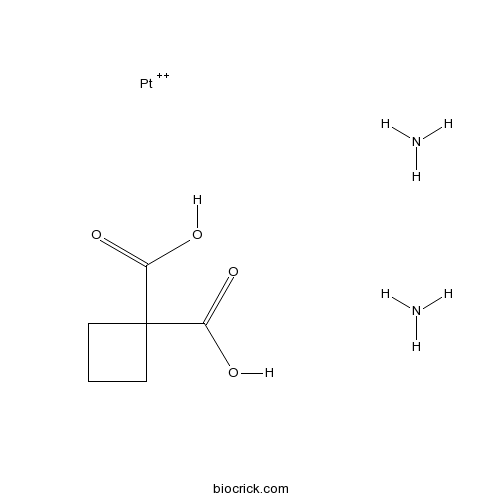DNA Damage/DNA Repair
DNA damage is an alteration in the chemical structure of DNA, such as a break in a strand of DNA, a base missing from the backbone of DNA, or a chemically changed base as 8-OHdG. Damage to DNA that occurs naturally can result from metabolic or hydrolytic processes. Metabolism releases compounds that damage DNA including reactive oxygen species, reactive nitrogen species, reactive carbonyl species, lipid peroxidation products and alkylating agents, among others, while hydrolysis cleaves chemical bonds in DNA.DNA repair is a collection of processes by which a cell identifies and corrects damage to the DNA molecules that encode its genome. In human cells, both normal metabolic activities and environmental factors such as radiation can cause DNA damage, resulting in as many as 1 million individual molecular lesions per cell per day.
Products for DNA Damage/DNA Repair
- HDAC(58)
- DNA Synthesis(46)
- ATM/ATR(8)
- Topoisomerase(35)
- PARP(29)
- DNA Alkylating(9)
- Nucleoside Antimetabolite/Analogue(13)
- tankyrase(3)
- DNA Ligases(2)
- DNA Methyltransferase(9)
- MTH1(3)
- DNA-PK(7)
- Telomerase(4)
- Cat.No. Product Name Information
-
BCC2149
CUDC-101
CUDC-101 is a potent inhibitor of HDAC, EGFR, and HER2 with IC50s of 4.4, 2.4, and 15.7 nM, respectively.
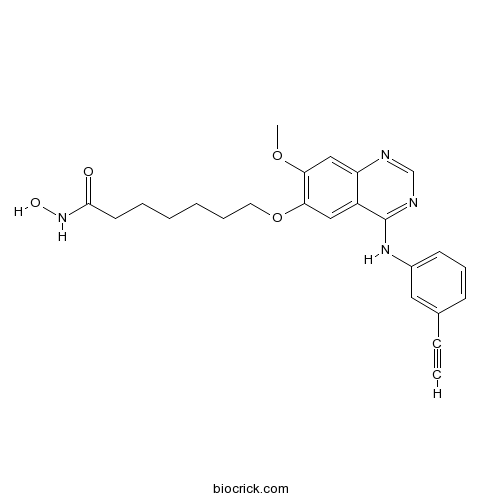
-
BCC1057
Daptomycin
Daptomycin is a lipopeptide antibiotic with rapid in vitro bactericidal activity against gram-positive organisms.
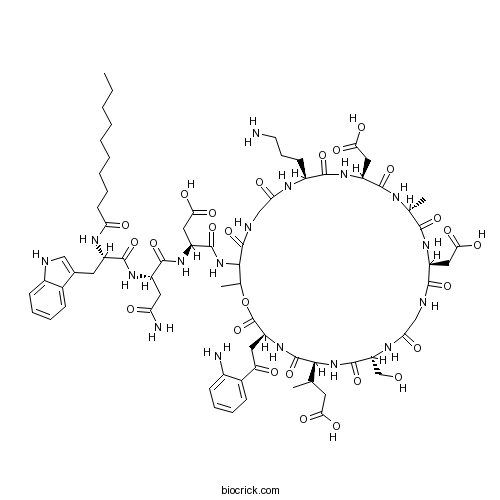
-
BCC5542
CAY10603
CAY10603 (BML-281) is a potent and selective HDAC6 inhibitor, with an IC50 of 2 pM; CAY10603 (BML-281) also inhibits HDAC1, HDAC2, HDAC3, HDAC8, HDAC10, with IC50s of 271, 252, 0.42, 6851, 90.7 nM.
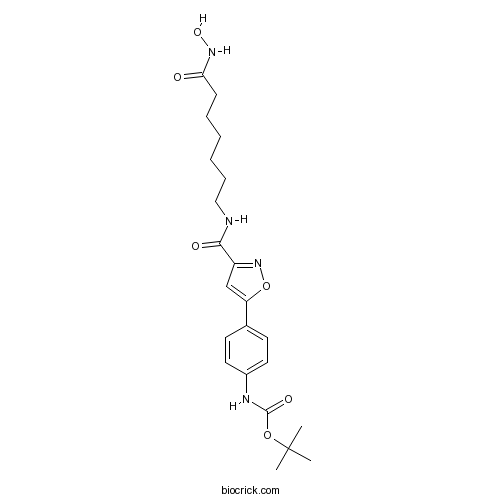
-
BCC2156
Valproic acid sodium salt (Sodium valproate)
Valproic acid sodium salt (Sodium Valproate) is an HDAC inhibitor, with IC50 in the range of 0.5 and 2 mM, also inhibits HDAC1 (IC50, 400 μM), and induces proteasomal degradation of HDAC2. Valproic acid sodium salt activates Notch1 signaling and inhibits proliferation in small cell lung cancer (SCLC) cells. Valproic acid sodium salt is used in the treatment of epilepsy, bipolar disorder and prevention of migraine headaches.
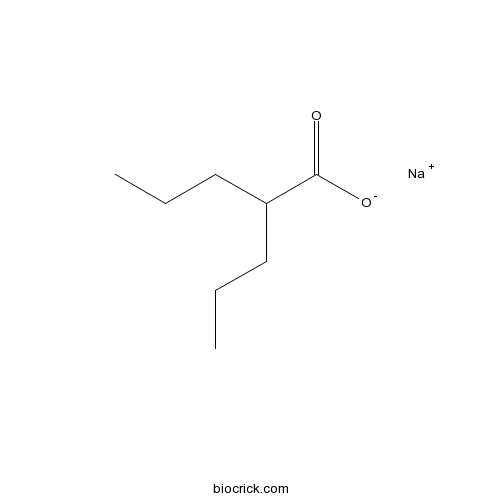
-
BCC3912
CP-466722
CP-466722 is a rapidly reversible inhibitor of ATM, with an IC50 of 4.1 μM, and has no effects on PI3K or closely related PI3K-like protein kinase (PIKK) family members.
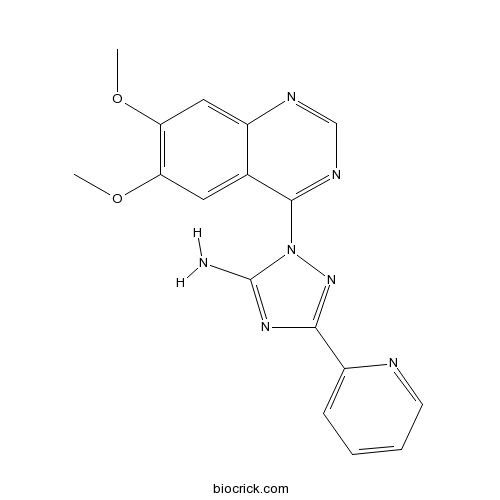
-
BCC3640
Amrubicin
Amrubicin(SM-5887) is a novel anthracycline derivative for treatment of bladder carcinoma.
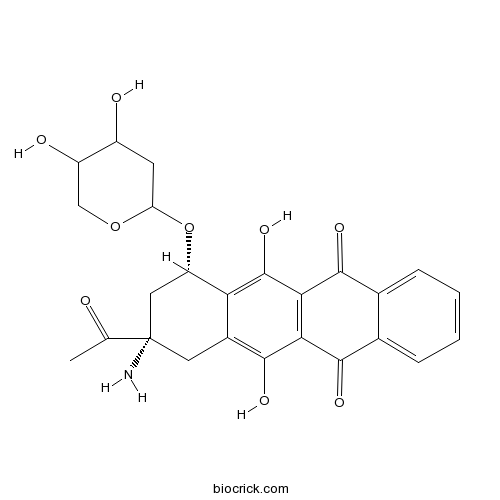
-
BCC2159
CI994 (Tacedinaline)
Tacedinaline (N-acetyldinaline) is an inhibitor of the histone deacetylase (HDAC) with IC50s of 0.9, 0.9, 1.2 μM for recombinant HDAC 1, 2 and 3 respectively.
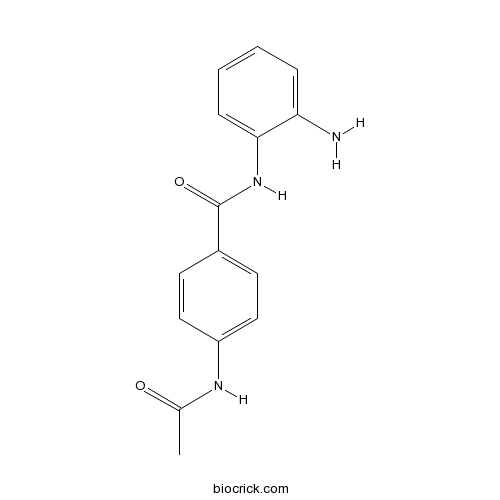
-
BCC1064
Gatifloxacin
Gatifloxacin (AM-1155; BMS-206584; PD135432) is a potent fluoroquinolone antibiotic with broad-spectrum antibacterial activity. Gatifloxacin inhibits bacterial type II topoisomerases (IC50=13.8 μg/ml for S. aureus topoisomerase IV) and E. coli DNA gyrase (IC50=0.109 μg/ml). Gatifloxacin can be used to treat bacterial conjunctivitis in vivo.
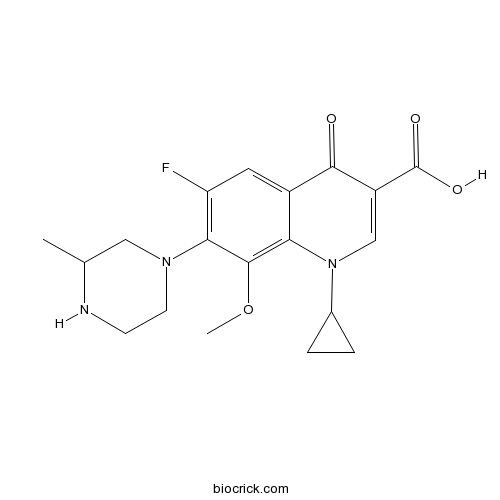
-
BCC4457
Raltitrexed
Raltitrexed is an antimetabolite drug used in chemotherapy, acting by inhibiting thymidylate synthase.
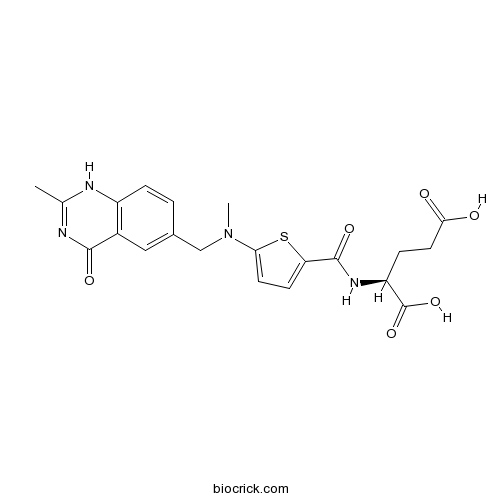
-
BCC3700
CX-5461
CX-5461 is a potent and oral rRNA synthesis inhibitor. It inhibits RNA polymerase I-driven transcription of rRNA with IC50s of 142, 113, and 54 nM in HCT-116, A375, and MIA PaCa-2 cells, respectively.
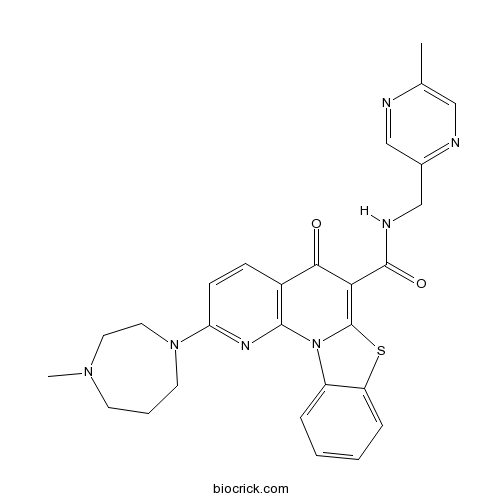
-
BCC4250
Marbofloxacin hydrochloride
Marbofloxacin hydrochloride is a potent antibiotic of which depends upon its inhibition of DNA-gyrase.
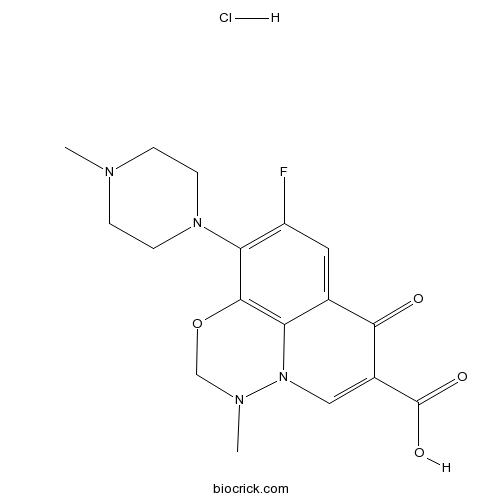
-
BCC4117
Mycophenolate mofetil hydrochloride
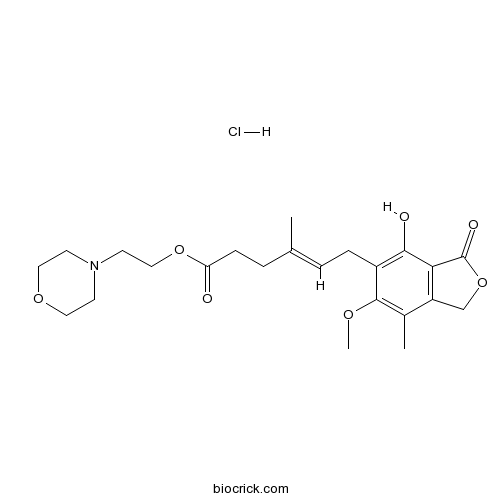
-
BCC1888
Resminostat hydrochloride
Resminostat hydrochloride is a potent inhibitor of HDAC1, HDAC3 and HDAC6, with mean IC50 values of 42.5, 50.1, 71.8 nM, respectively, and shows less potent activities against HDAC8, with an IC50 of 877 nM.
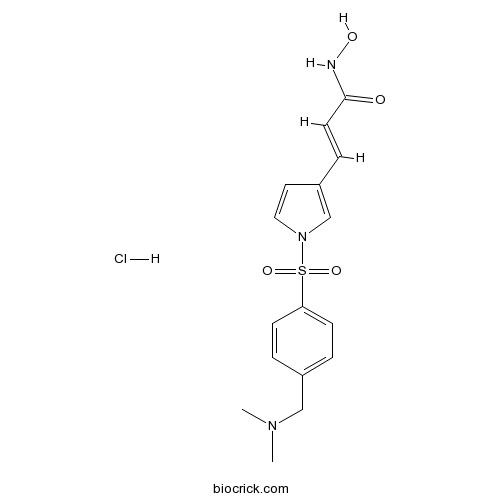
-
BCC1871
PSI-7977
Sofosbuvir (PSI-7977) is an HCV RNA replication inhibitor with an EC50 of 92 nM.
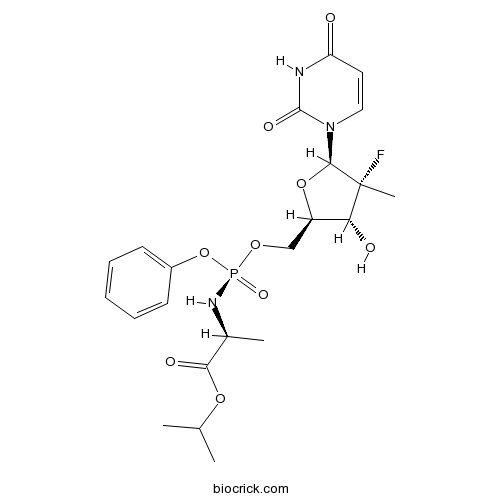
-
BCN2604
Topotecan hydrochloride
Topotecan Hydrochloride (SKF 104864A Hydrochloride) is a Topoisomerase I inhibitor with potent antineoplastic activities.
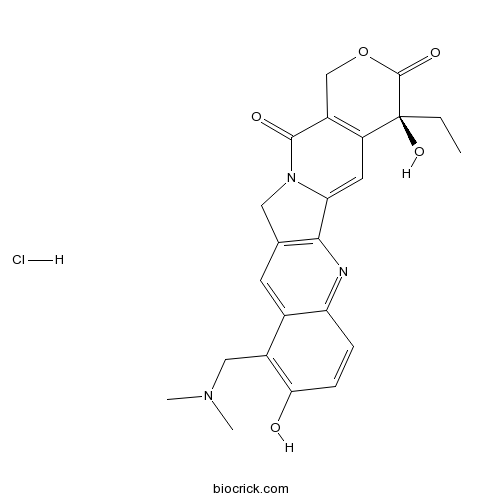
-
BCC2205
BMN 673
Talazoparib (BMN-673) is a highly potent PARP1/2 inhibitor with Kis of 1.2 nM and 0.87 nM, respectively.
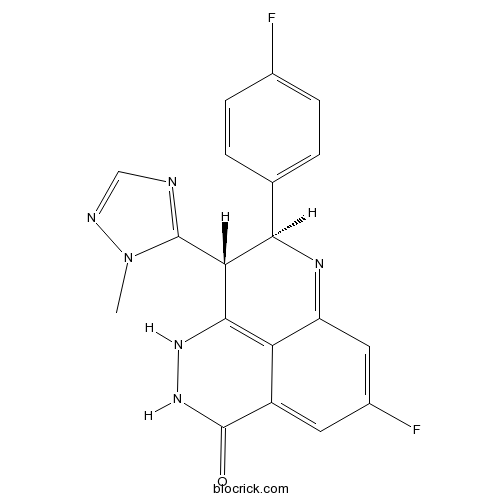
-
BCC1072
Nelarabine
Nelarabine (Arranon, 506U78) is a purine nucleoside analog and DNA synthesis inhibitor with IC50 from 0.067-2.15 μM in tumor cells.
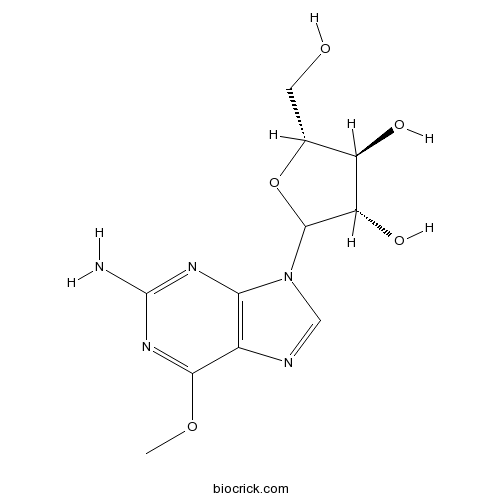
-
BCC1893
RG2833
RG2833 is a brain-penetrant HDAC inhibitor with IC50s of 60 nM and 50 nM for HDAC1 and HDAC3, respectively. The Ki values for HDAC1 and HDAC3 are 32 and 5 nM, respectively.
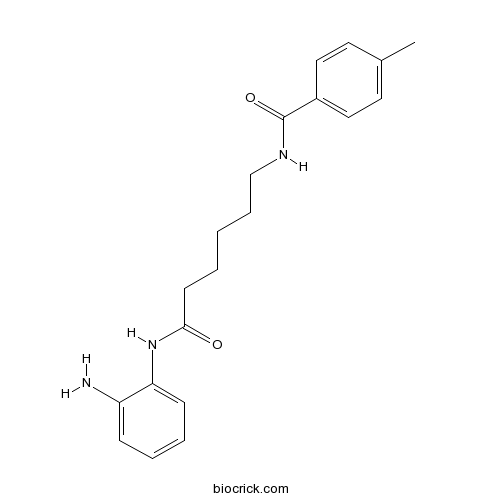
-
BCC1076
Gemcitabine HCl
Gemcitabine Hydrochloride (LY 188011 hydrochloride) is a DNA synthesis inhibitor which inhibits the growth of BxPC-3, Mia Paca-2, PANC-1, PL-45 and AsPC-1 cells with IC50s of 37.6, 42.9, 92.7, 89.3 and 131.4 nM, respectively.
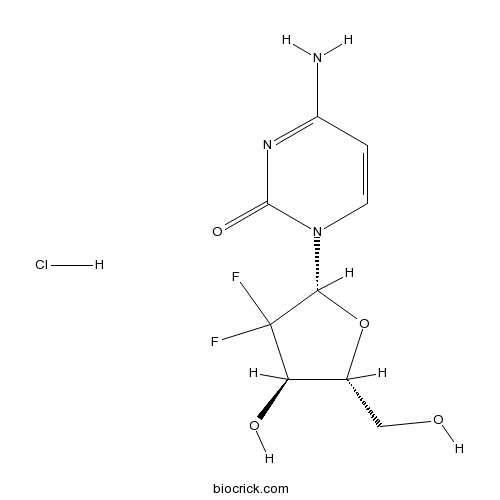
-
BCC1078
Clofarabine
Clofarabine(Clolar; Clofarex) inhibits the enzymatic activities of ribonucleotide reductase (IC50 = 65 nM) and DNA polymerase.
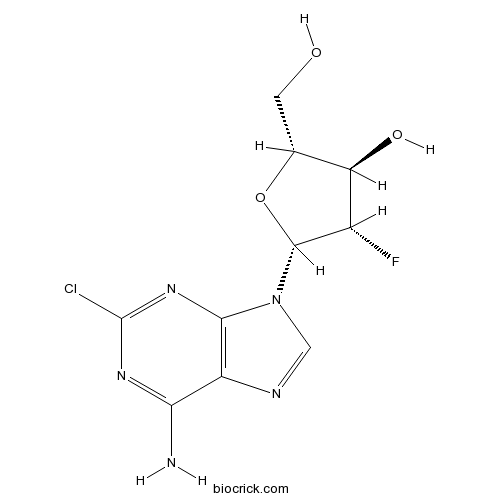
-
BCC1389
AZ20
AZ20 is a potent and selective inhibitor of ATR with an IC50 of 5 nM, and has 8-fold selectivity against mTOR (IC50=38 nM).
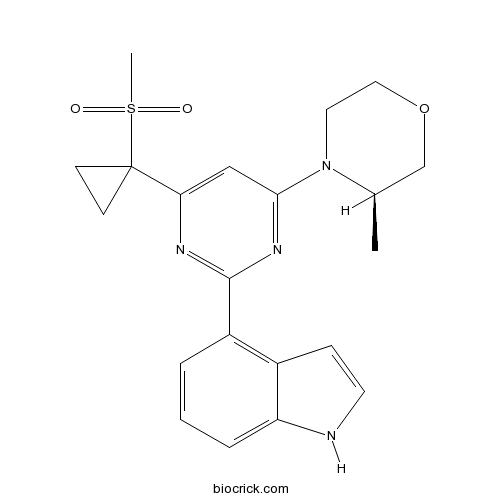
-
BCC5646
Topotecan
Topotecan (SKF 104864A; NSC 609669) is a Topoisomerase I inhibitor. The IC50 values of Topotecan at 24 h are 2.73±0.25 μM of U251 cells, 2.95±0.23 μM of U87 cells, 5.46±0.41 μM of GSCs-U251 and 5.95±0.24 μM of GSCs-U87.
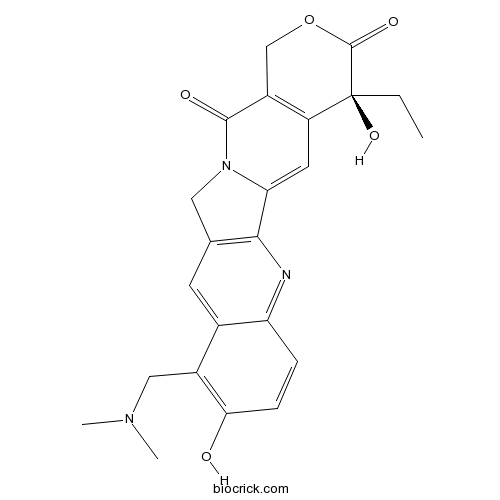
-
BCC2158
Tubastatin A
Tubastatin A is a potent and selective HDAC6 inhibitor with IC50 of 15 nM in a cell-free assay, and is selective (1000-fold more) against all other isozymes except HDAC8 (57-fold more).
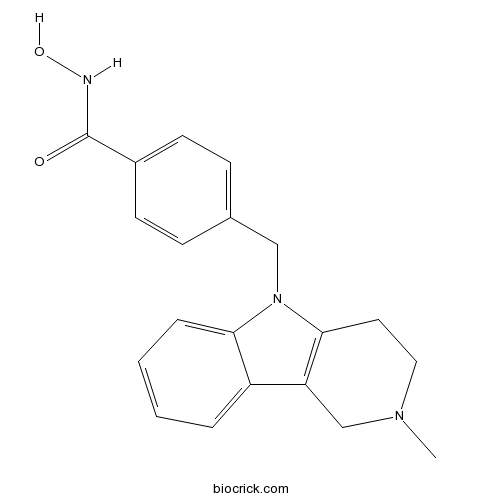
-
BCC5558
Mupirocin
Mupirocin (BRL-4910A) is an orally active antibiotic isolated from Pseudomonas fluorescens. Mupirocin (BRL-4910A) apparently exerts its antimicrobial activity by reversibly inhibiting isoleucyl-transfer RNA, thereby inhibiting bacterial protein and RNA synthesis.
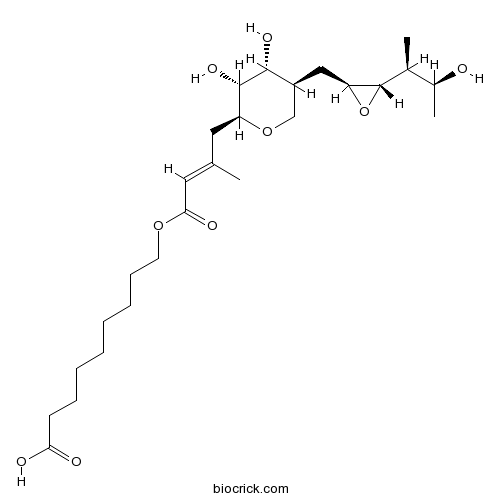
-
BCC3597
Romidepsin (FK228, depsipeptide)
Romidepsin (FK 228) is a Histone deacetylase (HDAC) inhibitor with anti-tumor activities. Romidepsin (FK 228) inhibits HDAC1, HDAC2, HDAC4, and HDAC6 with IC50s of 36 nM, 47 nM, 510 nM and 1.4 μM, respectively. Romidepsin (FK 228) is produced by Chromobacterium violaceum, induces cell G2/M phase arrest and apoptosis.
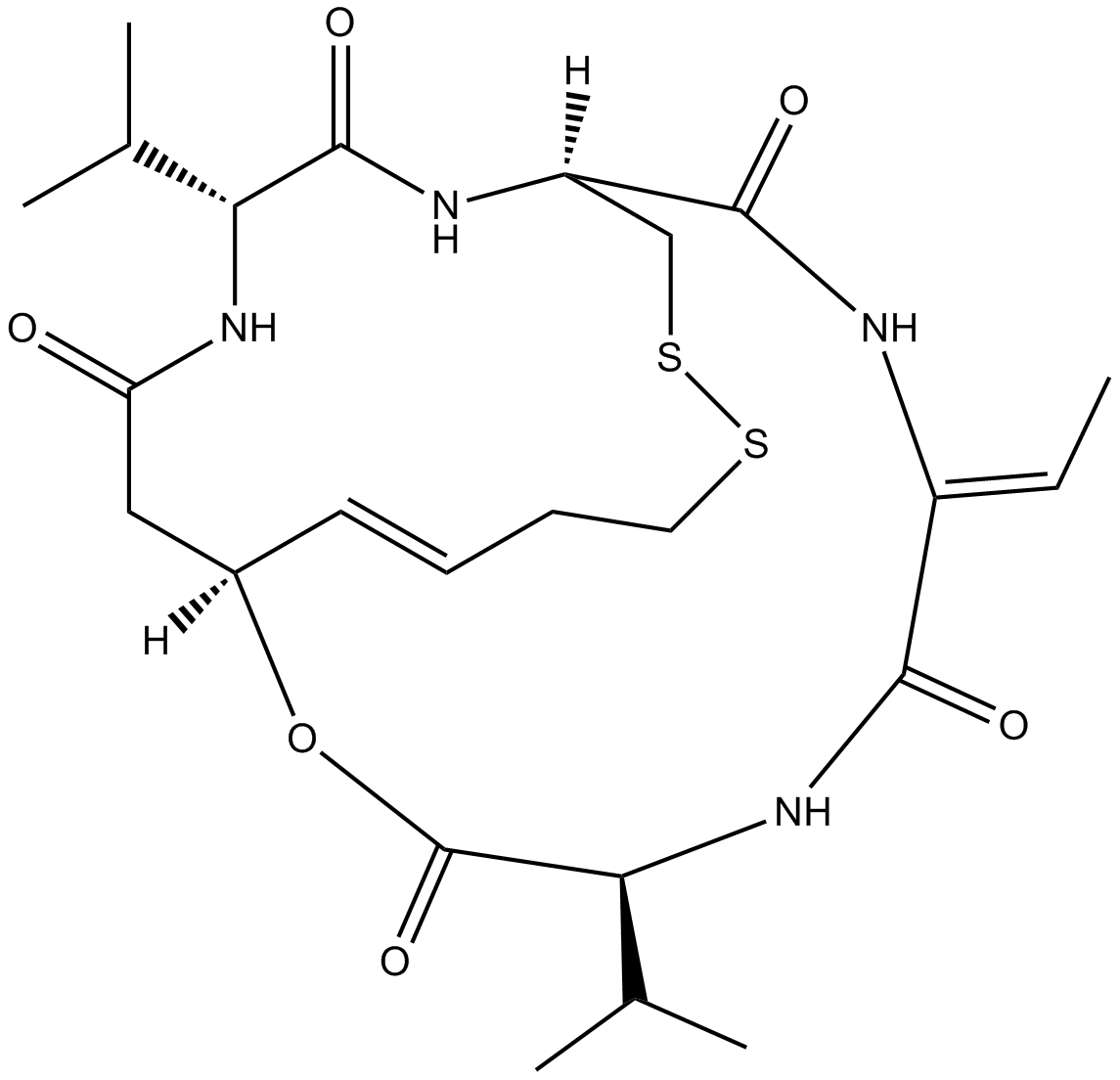
-
BCC5356
Satraplatin
Satraplatin is an alkylating agent, with potent antitumor effect.
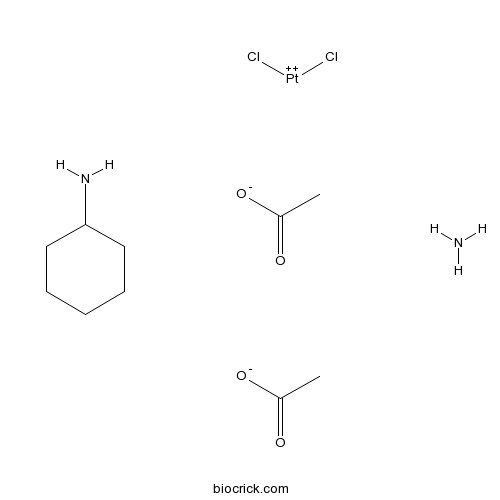
-
BCC4794
Lomustine
Lomustine (CCNU; NSC 79037) is a DNA alkylating agent, with antitumor activity.
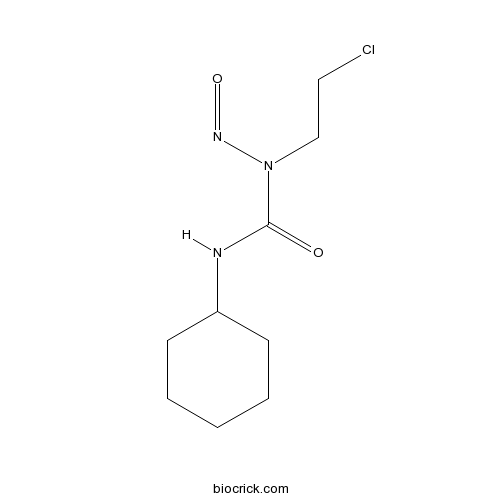
-
BCC3877
Tubastatin A HCl
Tubastatin A (Hydrochloride) is a potent and selective HDAC6 inhibitor with IC50 of 15 nM in a cell-free assay, and is selective (1000-fold more) against all other isozymes except HDAC8 (57-fold more).
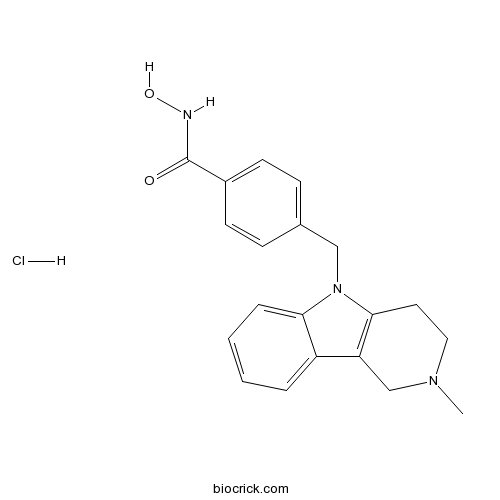
-
BCC3993
TMP269
TMP269 is a novel and selective class IIa histone deacetylase (HDAC) inhibitor with IC50s of 157 nM, 97 nM, 43 nM and 23 nM for HDAC4, HDAC5, HDAC7 and HDAC9, respectively.
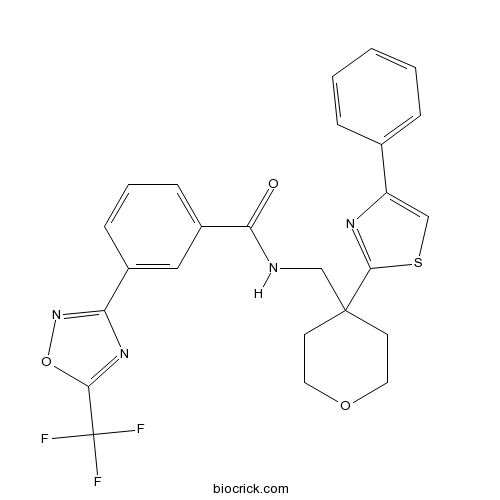
-
BCC2144
Rocilinostat (ACY-1215)
Ricolinostat (ACY-1215) is a potent and selective HDAC6 inhibitor, with an IC50 of 5 nM. ACY-1215 also inhibits HDAC1, HDAC2, and HDAC3 with IC50s of 58, 48, and 51 nM, respectively.
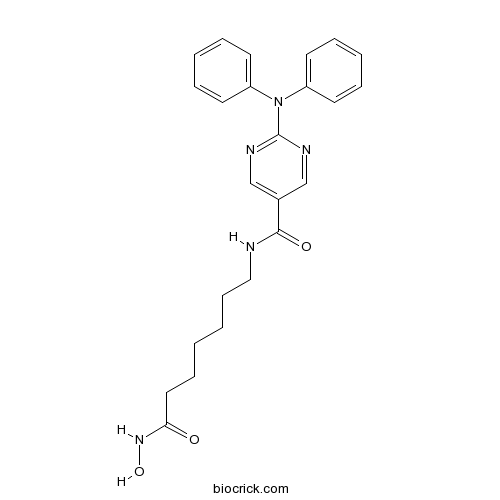
-
BCC6505
AZD6738
AZD6738 is a potent inhibitor of ATR kinase with an IC50 of 1 nM.
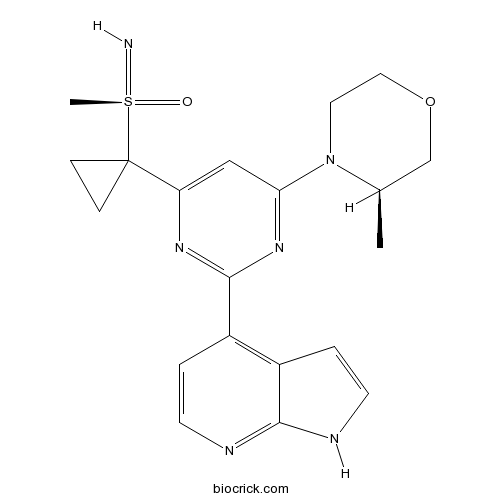
-
BCC3991
RGFP966
RGFP966 is a highly selective HDAC3 inhibitor with an IC50 of 80 nM and shows no inhibition to other HDACs at concentrations up to 15 μM.
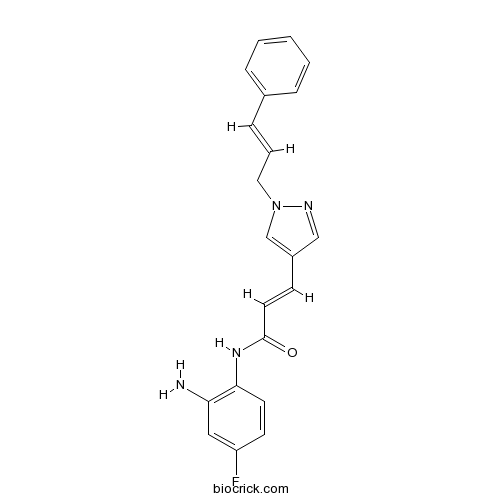
-
BCC6421
E3330
E3330 (APX-3330) is a direct, orally active AP endonuclease 1 (APE1; also known as REF-1) inhibitor, which suppresses NF-κB DNA-binding activity. E3330 (APX-3330) blocks TNF-α-induced activation of IL-8 production in liver cancer cell lines. E3330 (APX-3330) shows anticancer properties, such as inhibition of cancer cell growth and migration[1-4].
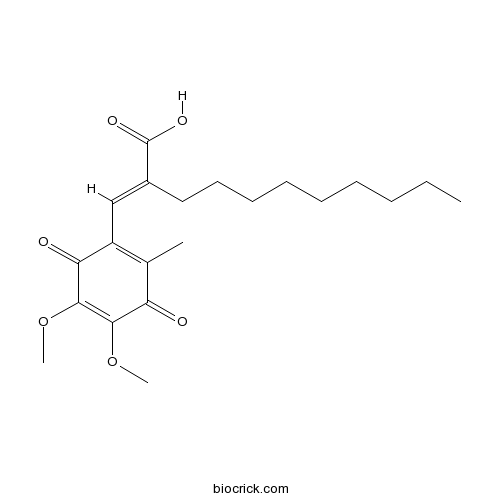
-
BCC1651
INNO-206
Aldoxorubicin (INNO-206) is an albumin-binding prodrug of Doxorubicin (DNA topoisomerase II inhibitor), which is released from albumin under acidic conditions. Aldoxorubicin (INNO-206) has potent antitumor activities in various cancer cell lines and in murine tumor models.
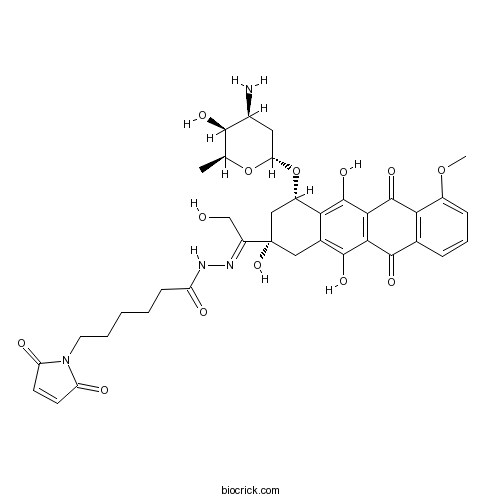
-
BCC1325
Abacavir
Abacavir is a potent nucleoside analog reverse-transcriptase inhibitor (NRTI).
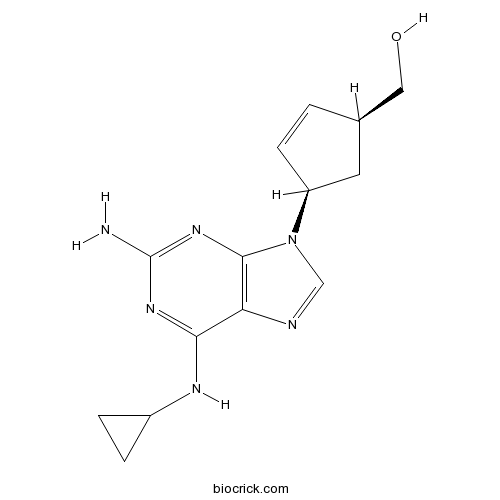
-
BCC5091
Irinotecan HCl Trihydrate
Irinotecan hydrochloride trihydrate is a topoisomerase I inhibitor with antitumor activity.
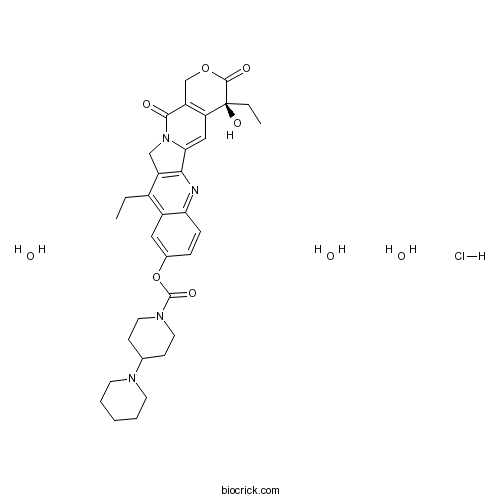
-
BCC6383
G007-LK
G007-LK is a potent and selective inhibitor of TNKS1 and TNKS2, with IC50s of 46 nM and 25 nM, respectively.
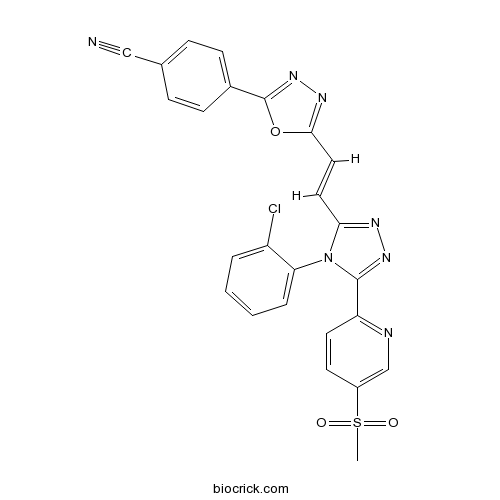
-
BCC7621
Thiostrepton
Thiostrepton is a natural cyclic oligopeptide antibiotic, is a natural product of the ribosomally synthesized and post-translationally modified peptide (RiPP) class.
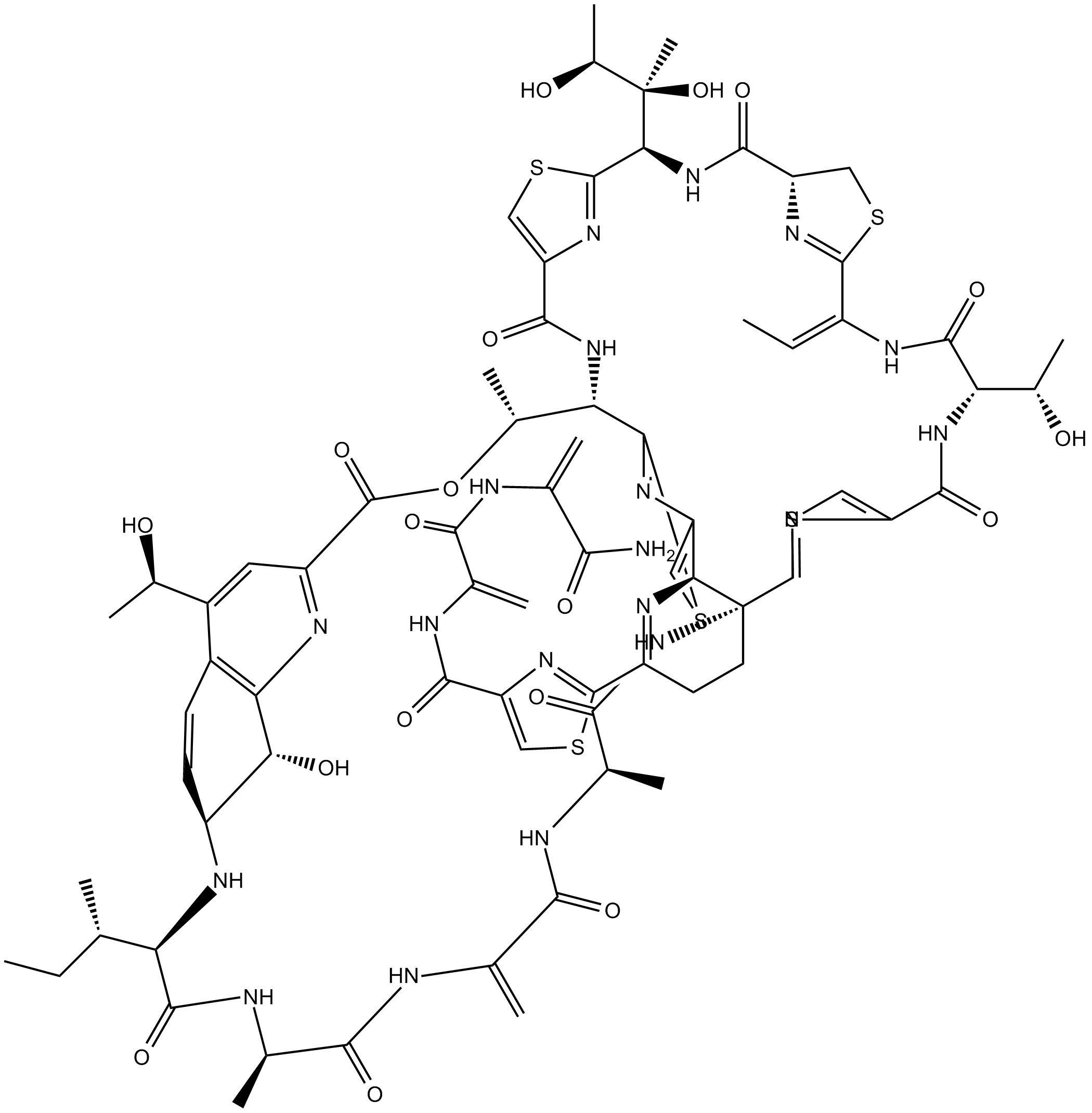
-
BCC2421
LMK 235
LMK-235 is a potent and selective HDAC4/5 inhibitor, inhibits HDAC5, HDAC4, HDAC6, HDAC1, HDAC2, HDAC11 and HDAC8, with IC50s of 4.22 nM, 11.9 nM, 55.7 nM, 320 nM, 881 nM, 852 nM and 1278 nM, respectively, and is used in cancer research.
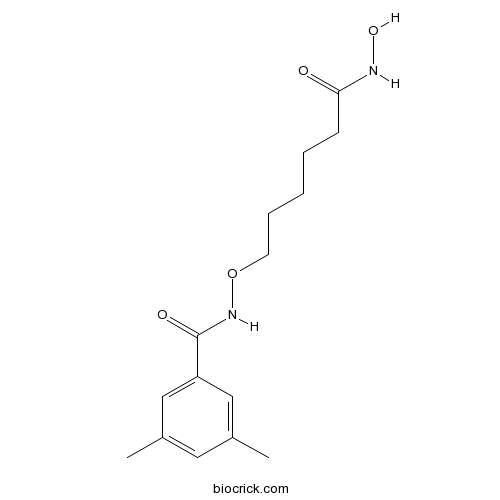
-
BCC6541
NVP-TNKS656
NVP-TNKS656 is a highly potent, selective, and orally active TNKS2 inhibitor with IC50 of 6 nM, and is > 300 fold selectivity against PARP1 and PARP2.
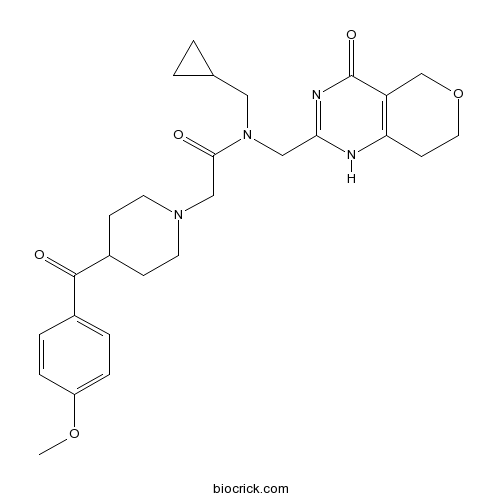
-
BCC5652
BRD73954
BRD73954 ia a potent and selective HDAC inhibitor with IC50 of 36 nM and 120 nM for HDAC6 and HDAC8, respectively.
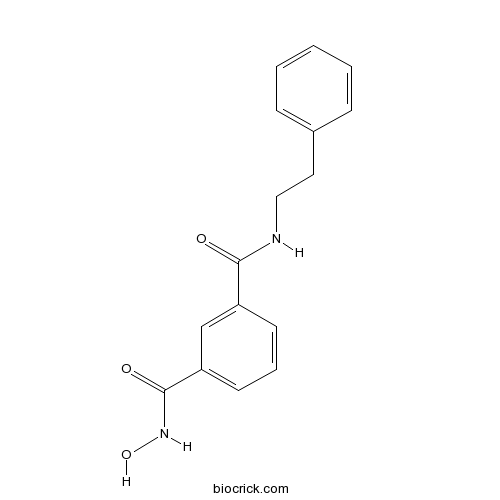
-
BCC3759
Cytarabine
Cytarabine, a nucleoside analog, causes S phase cell cycle arrest and inhibits DNA polymerase. Cytarabine inhibits DNA synthesis with an IC50 of 16 nM. Cytarabine has antiviral effects against HSV.
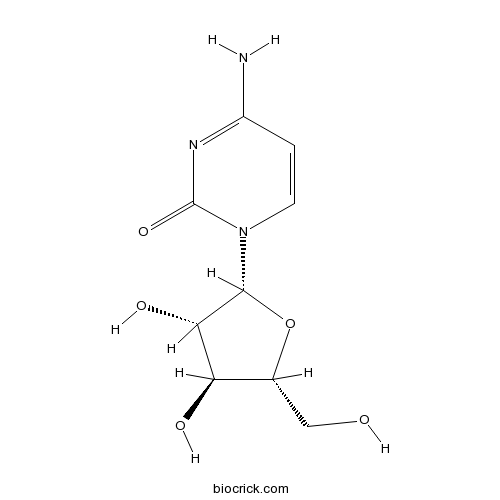
-
BCC3931
Trovafloxacin mesylate
Trovafloxacin mesylate is a broad-spectrum quinolone antibiotic with potent activity against Gram-positive, Gram-negative and anaerobic organisms. Trovafloxacin mesylate blocks the DNA gyrase and topoisomerase IV activity. Trovafloxacin mesylate is also a potent, selective and orally active pannexin 1 channel (PANX1) inhibitor with an IC50 of 4 μM for PANX1 inward current. Trovafloxacin mesylate does not inhibit connexin 43 gap junction or PANX2. Trovafloxacin mesylate leads to dysregulated fragmentation of apoptotic cells by inhibiting PANX1.
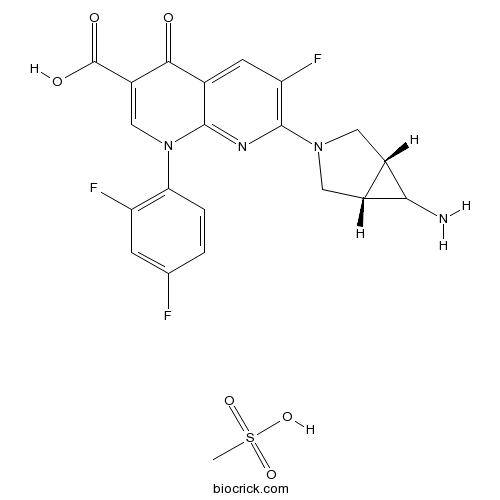
-
BCC5488
Santacruzamate A (CAY10683)
Santacruzamate A (CAY-10683) is a potent and selective HDAC2 inhibitor with an IC50 of 119 pM.
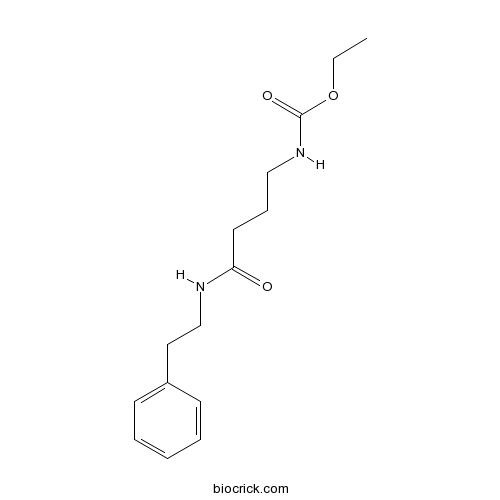
-
BCC1087
Dexrazoxane HCl (ICRF-187, ADR-529)
Dexrazoxane hydrochloride (ICRF-187 hydrochloride) is a cardioprotective agent.
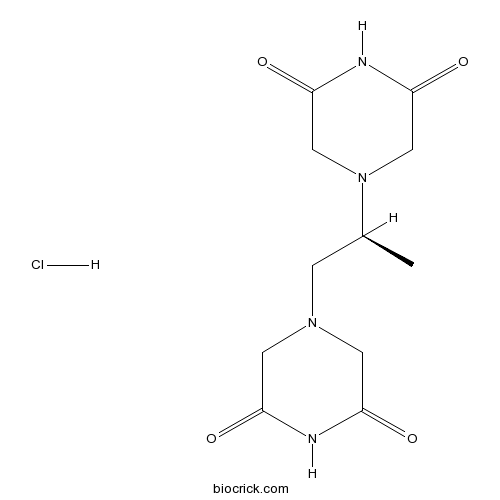
-
BCC2145
Vorinostat (SAHA, MK0683)
Vorinostat (SAHA) is a potent and orally active pan-inhibitor of HDAC1, HDAC2 and HDAC3 (Class I), HDAC7 (Class II) and HDAC11 (Class IV), with ID50 values of 10 nM and 20 nM for HDAC1 and HDAC3, respectively. Vorinostat induces cell apoptosis. Vorinostat is also an effective inhibitor of human papillomaviruse (HPV)-18 DNA amplification.
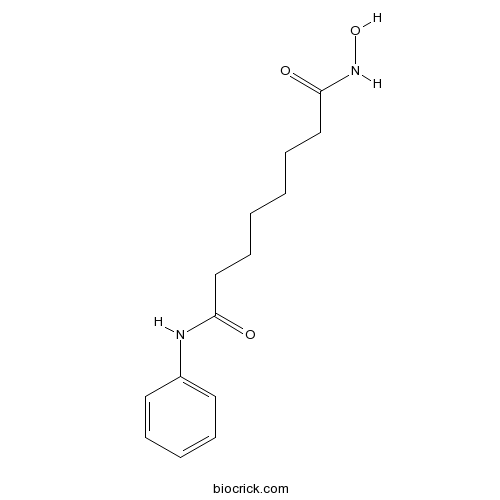
-
BCC1537
DOXO-EMCH
DOXO-EMCH is a 6-maleimidocaproyl hydrazone derivative of Doxorubicin, is an albumin binding prodrug.
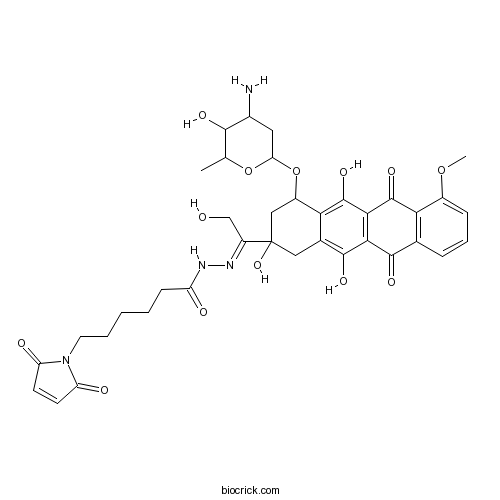
-
BCC6518
Dp44mT
Dp44mT is an iron chelator with selective anticancer activity.
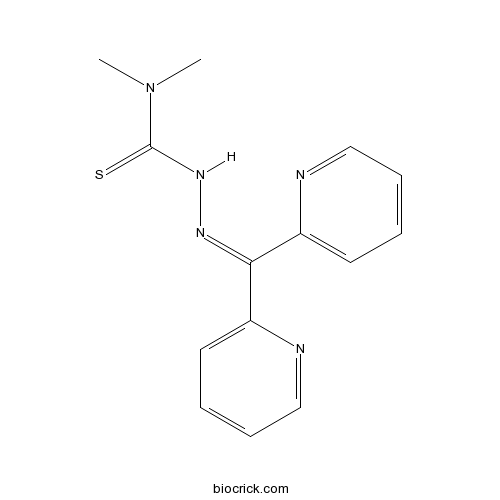
-
BCC3978
SCR7
SCR7 is a DNA Ligase IV inhibitor with anticancer activity and is also a CRISPR HDR enhancer which increases the efficiency of Cas9-mediated HDR.
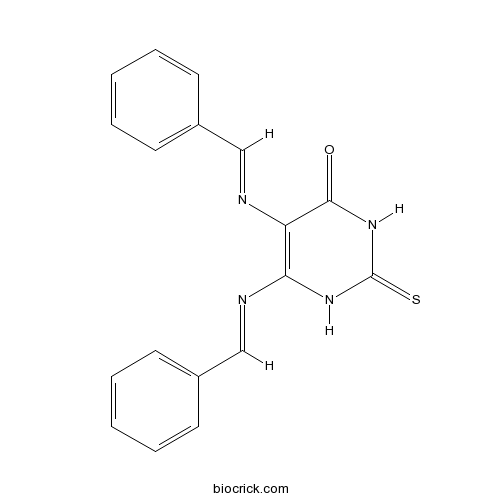
-
BCC2220
Thioguanine
6-Thioguanine (Thioguanine; 2-Amino-6-purinethiol) is an anti-leukemia and immunosuppressant agent, acts as an inhibitor of SARS and MERS coronavirus papain-like proteases (PLpros) and also potently inhibits USP2 activity, with IC50s of 25 μM and 40 μM for Plpros and recombinant human USP2, respectively.
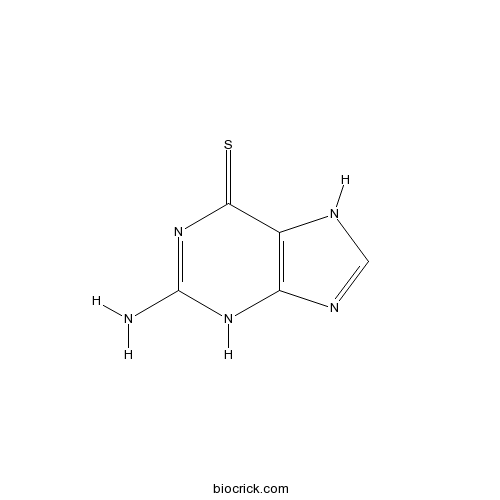
-
BCC5244
Carmustine
Carmustine is an antitumor chemotherapeutic agent, which works by akylating DNA and RNA.
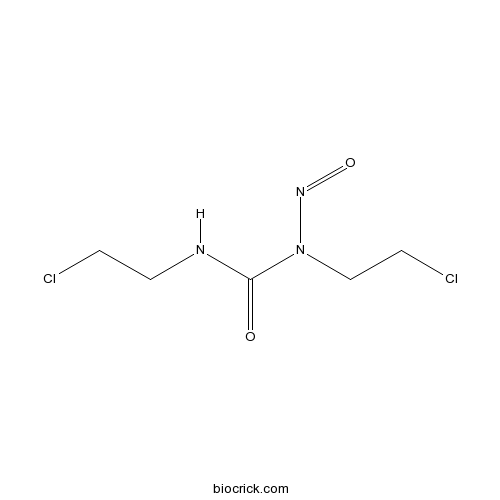
-
BCN2168
Capecitabine
Capecitabine is an oral prodrug that is converted to its active metabolite, 5-FU, by thymidine phosphorylase.
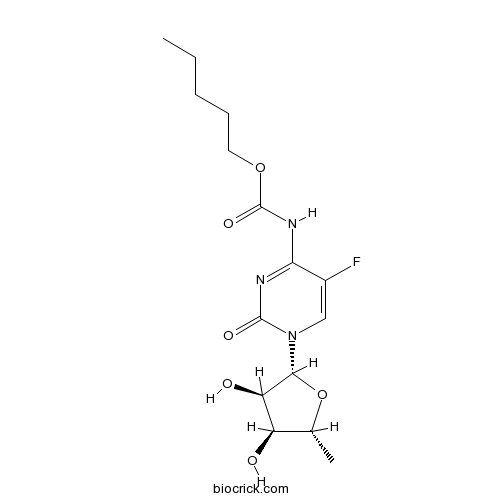
-
BCC1514
Daminozide
Daminozide(DMASA; DIMG; B 995), a plant growth regulator, selectively inhibits the KDM2/7 JmjC subfamily.
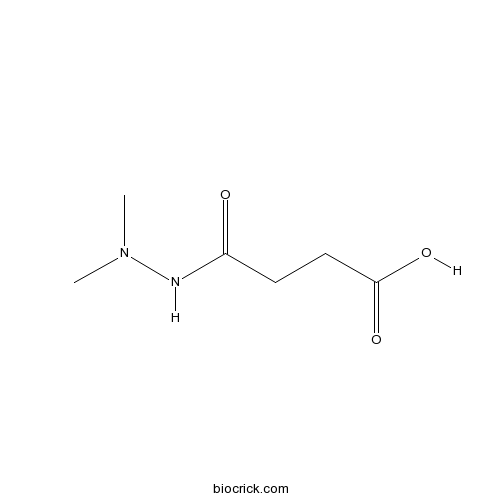
-
BCC6400
TH287
TH287 is a potent inhibitor of MTH1 (NUDT1) with an IC50 value of 0.8 nM, less potent for MTH2, NUDT5, NUDT12, NUDT14, and NUDT16.
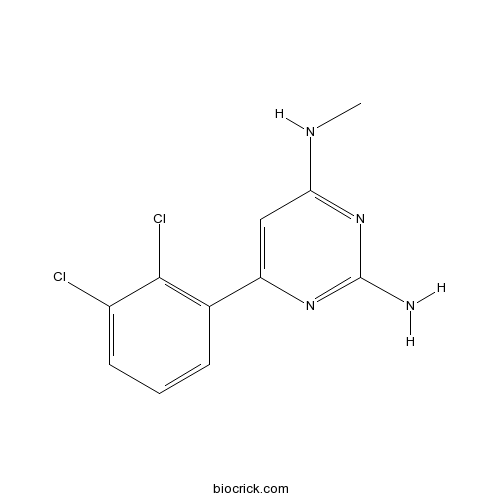
-
BCC6397
TH588
TH588 is first-in-class nudix hydrolase family inhibitor that potently and selectively engage and inhibit the MTH1 (IC50= 5 nM).
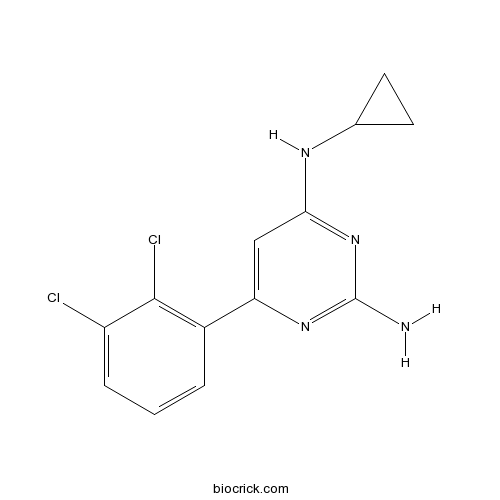
-
BCC7622
Compound 401
Compound 401 is a synthetic inhibitor of DNA-PK (IC50 = 0.28 μM) that also targets mTOR but not PI3K in vitro.
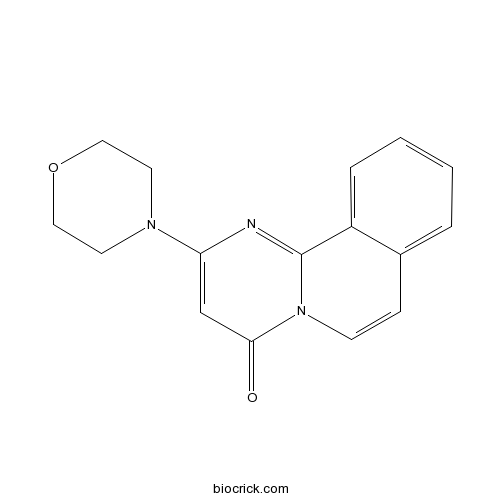
-
BCC2164
Sodium Phenylbutyrate
Benzenebutyric acid sodium (4-Phenylbutyric acid sodium) is an inhibitor of HDAC and endoplasmic reticulum (ER) stress, used in cancer and infection research.
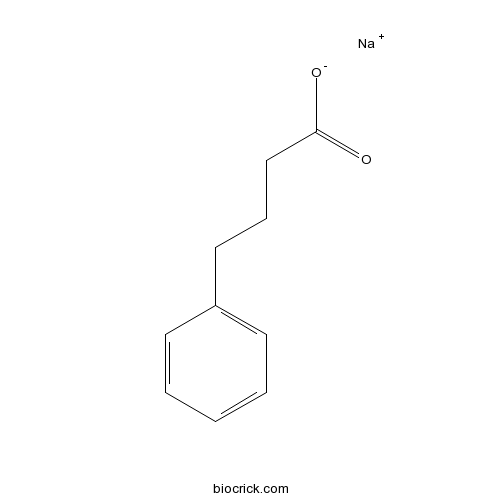
-
BCC5613
SCH 51344
Potent MTH1 inhibitor
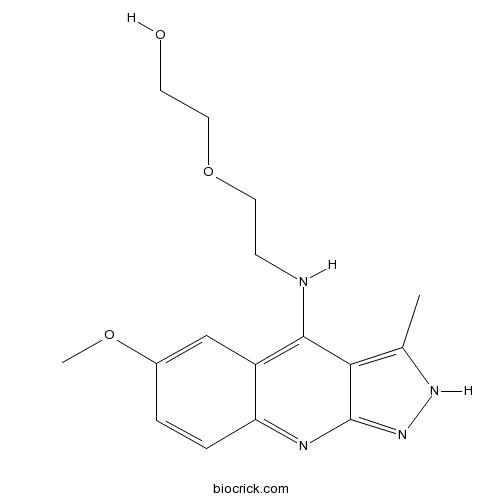
-
BCC2044
Voreloxin
Voreloxin (SNS-595; Vosaroxin; AG 7352) is a first-in-class topoisomerase II inhibitor that intercalates DNA and induces site-selective DNA DSB, G2 arrest, and apoptosis.
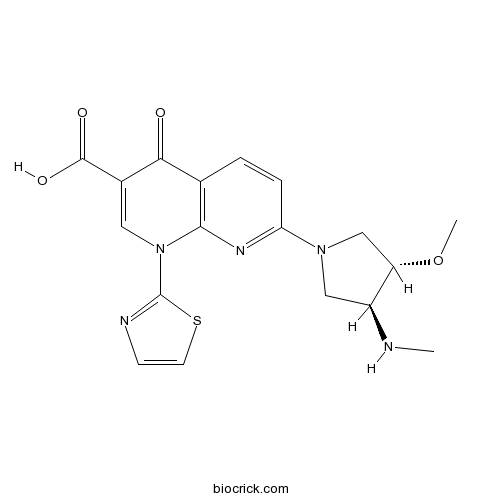
-
BCC2045
Voreloxin Hydrochloride
Voreloxin Hydrochloride is a first-in-class topoisomerase II inhibitor that intercalates DNA and induces site-selective DNA DSB, G2 arrest, and apoptosis.
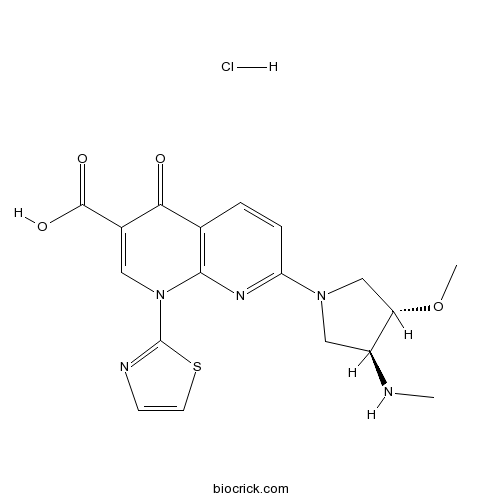
-
BCC4455
FT-207 (NSC 148958)
Tegafur (FT 207; NSC 148958) is a chemotherapeutic 5-FU prodrug used in the treatment of cancers; is a component of tegafur-uracil.
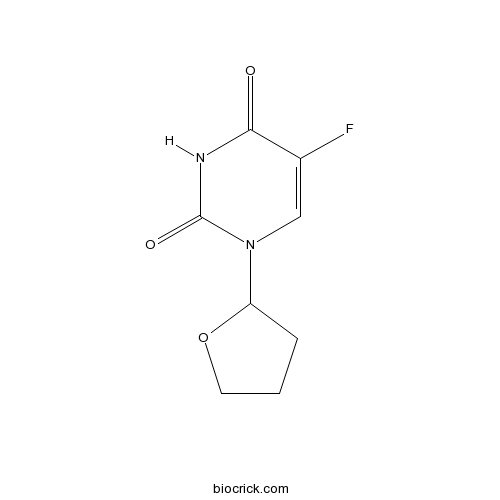
-
BCC3599
Apicidin
Apicidin (OSI 2040) is a fungal metabolite, acts as a histone deacetylase (HDAC) inhibitor, with antiparasitic activity and a broad spectrum antiproliferative activity.
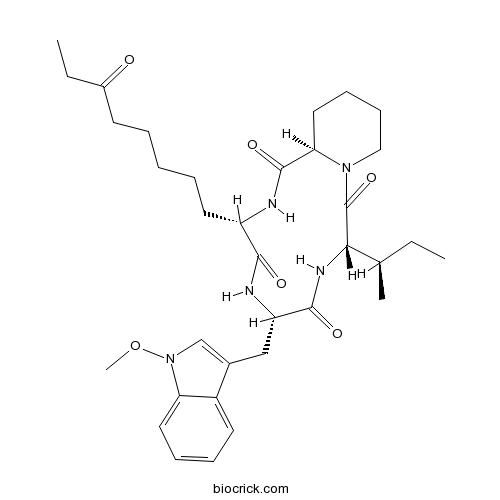
-
BCC2507
Moxifloxacin HCl
Moxifloxacin Hydrochloride (BAY 12-8039) is an oral 8-methoxyquinolone antimicrobial for use in the treatment of acute bacterial sinusitis, acute bacterial exacerbations of chronic bronchitis, and community-acquired pneumonia.
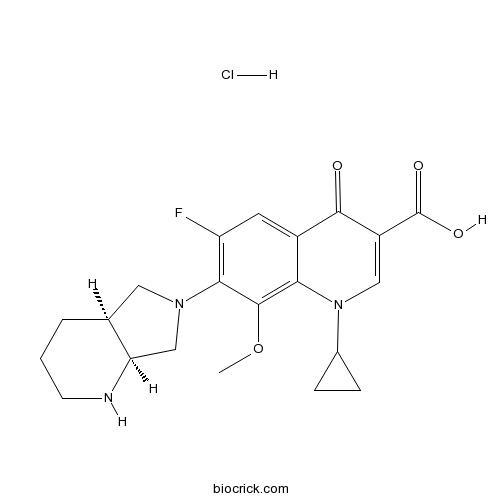
-
BCN1225
(S)-10-Hydroxycamptothecin
(S)-10-Hydroxycamptothecin (10-HCPT;10-Hydroxycamptothecin) is a DNA topoisomerase I inhibitor of isolated from the Chinese plant Camptotheca accuminata. (S)-10-Hydroxycamptothecin exhibits a remarkable apoptosis-inducing effect. (S)-10-Hydroxycamptothecin has the potential for hepatoma, gastric carcinoma, colon cancer and leukaemia treatment.
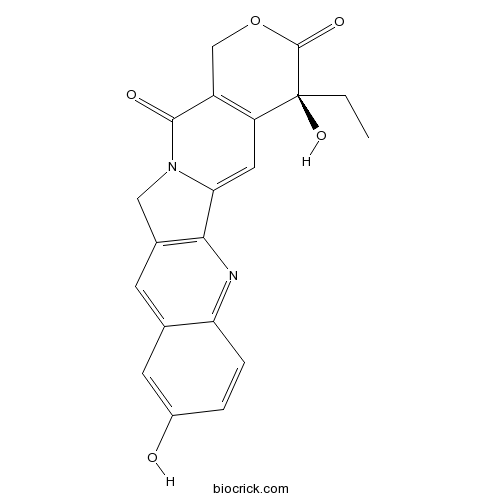
-
BCC7259
DMNB
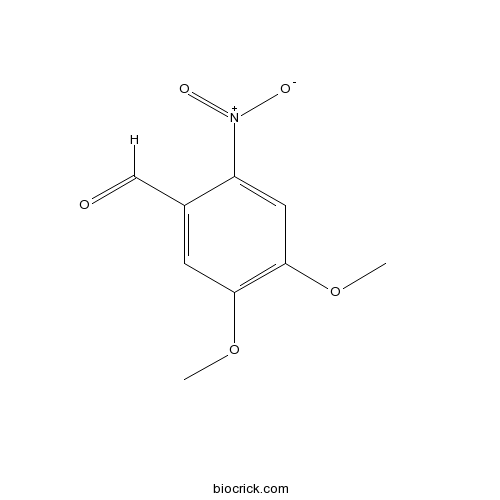
-
BCC4115
Daunorubicin
Daunorubicin (Daunomycin; RP 13057; Rubidomycin) is a topoisomerase II inhibitor with potent antineoplastic activities. Daunorubicin (Daunomycin; RP 13057; Rubidomycin) inhibites DNA and RNA synthesis in sensitive and resistant Ehrlich ascites tumor cells.
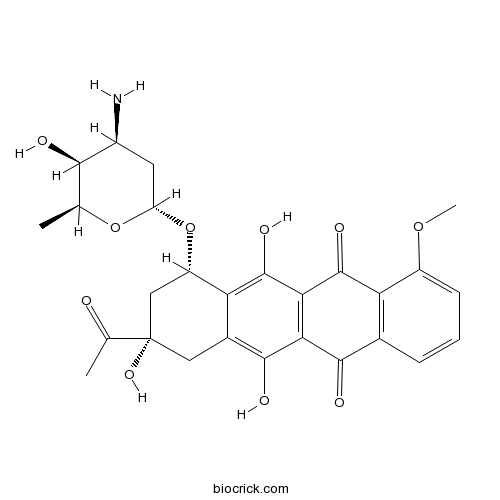
-
BCC3595
Entinostat (MS-275,SNDX-275)
Entinostat is an oral and selective class I HDAC inhibitor, with IC50s of 243 nM, 453 nM, and 248 nM for HDAC1, HDAC2, and HDAC3, respectively.
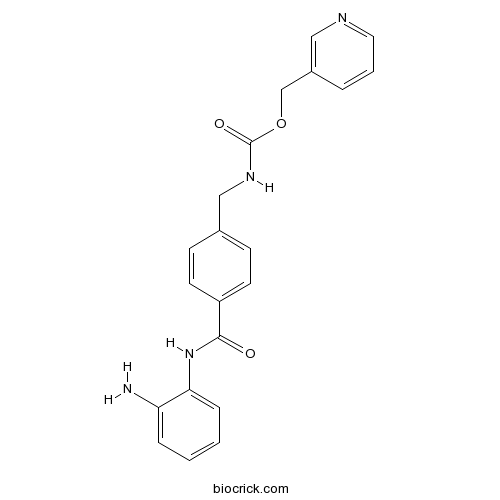
-
BCC2518
Fludarabine
Fludarabine (NSC 118218) is a DNA synthesis inhibitor, which also inhibits phosphorylation of STAT1. Fludarabine, a pro-drug, is converted metabolically by dephosphorylation to the antimetabolite, F-ara-A.
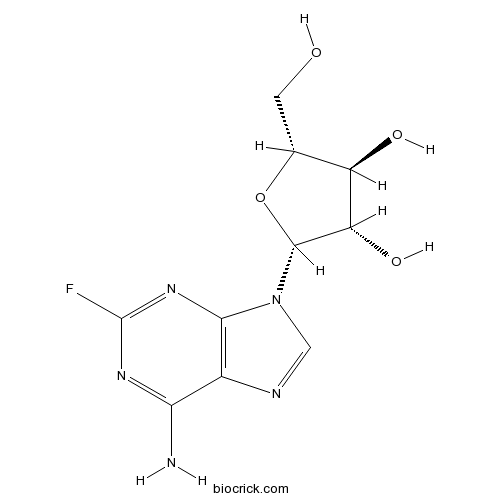
-
BCC2082
Doxorubicin
Doxorubicin (Hydroxydaunorubicin), a cytotoxic anthracycline antibiotic, is an anti-cancer chemotherapy agent. Doxorubicin inhibits topoisomerase II with an IC50 of 2.67 μM, thus stopping DNA replication. Doxorubicin reduces basal phosphorylation of AMPK and its downstream target acetyl-CoA carboxylase. Doxorubicin induces apoptosis and autophagy. Doxorubicin inhibits human DNA topoisomerase I with an IC50 of 0.8 μM.
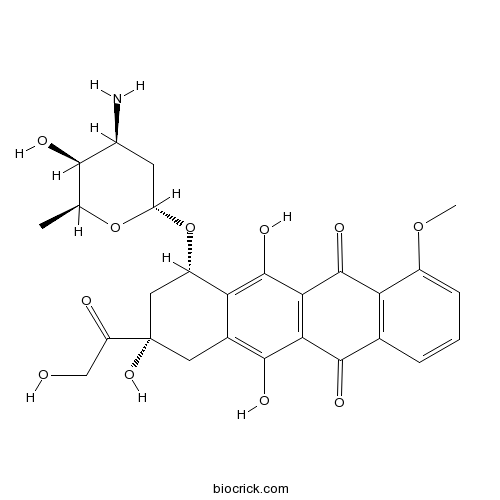
-
BCC2024
VAL-083
VAL-083 is an alkylating agent that creates N7 methylation on DNA, with antitumor activity.
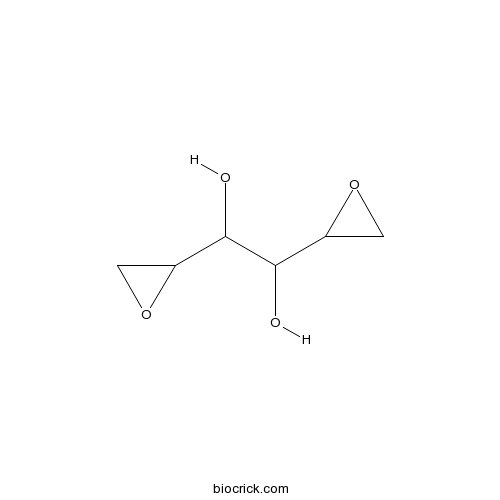
-
BCC5112
Triapine
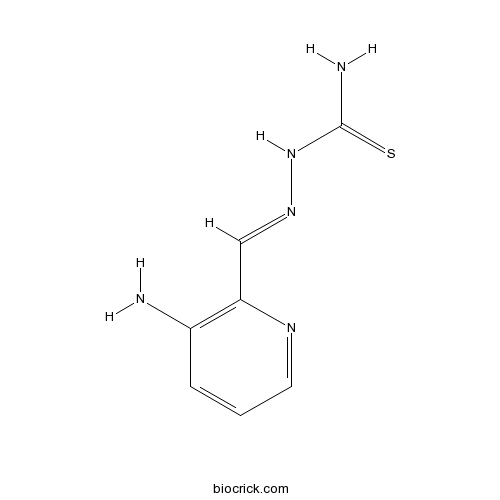
-
BCC2162
M344
M344 (D 237) is an inhibitor of histone deacetylase (IC50=100 nM) and an inducer of terminal cell fifferentiation.
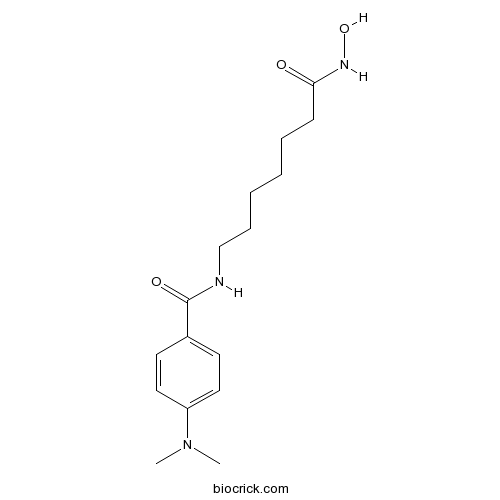
-
BCC1117
Doxorubicin (Adriamycin) HCl
Doxorubicin hydrochloride (Hydroxydaunorubicin hydrochloride), a cytotoxic anthracycline antibiotic, is an anti-cancer chemotherapy agent. Doxorubicin hydrochloride inhibits topoisomerase II with an IC50 of 2.67 μM, thus stopping DNA replication. Doxorubicin hydrochloride reduces basal phosphorylation of AMPK and its downstream target acetyl-CoA carboxylase. Doxorubicin hydrochloride induces apoptosis and autophagy. Doxorubicin hydrochloride inhibits human DNA topoisomerase I with an IC50 of 0.8 μM.
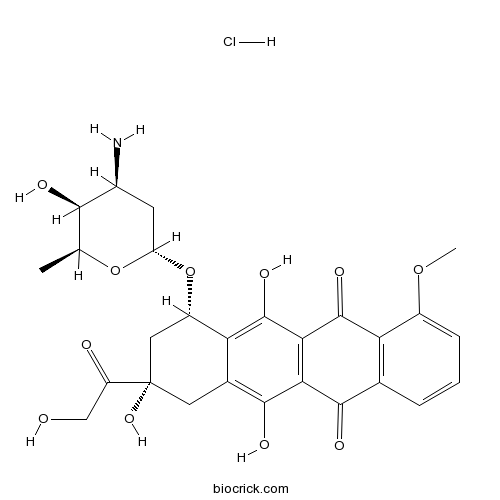
-
BCC1987
Tasquinimod
Tasquinimod is an oral antiangiogenic agent, which has the potential for castration-resistant prostate cancer treatment. Tasquinimod binds to the regulatory Zn2+ binding domain of HDAC4 with Kd of 10-30 nM. Tasquinimod also is a S100A9 inhibitor.
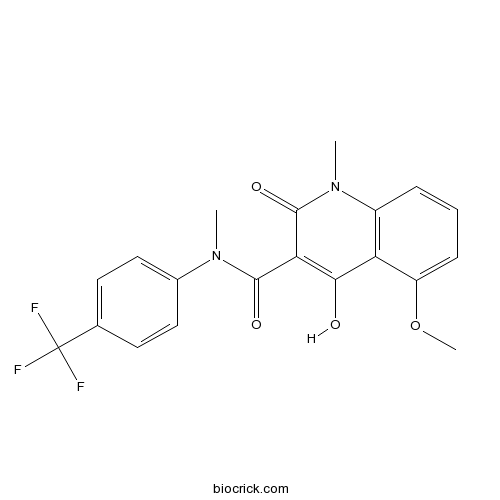
-
BCC1837
Paradol
Paradol is a pungent phenolic substance found in ginger and other Zingiberaceae plants. Paradol is an effective inhibitor of tumor promotion in mouse skin carcinogenesis, binds to cyclooxygenase (COX)-2 active site.
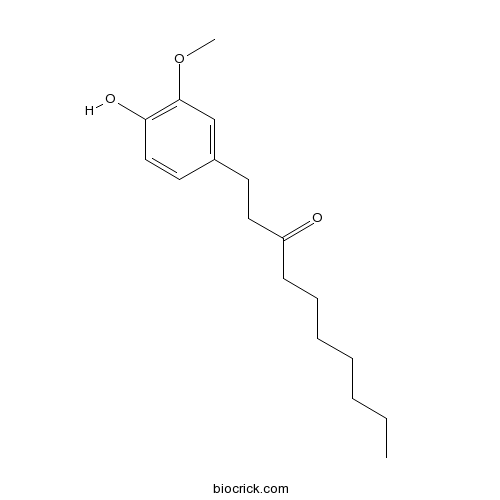
-
BCC1120
XAV-939
XAV-939 is a potent tankyrase inhibitor that targets Wnt/β-catenin signaling. XAV-939 stabilizes axin by inhibiting tankyrase 1 and tankyrase 2 (IC50s of 5 and 2 nM, respectively), thereby stimulating β-catenin degradation. XAV939 binds tightly to the catalytic (PARP) domains of TNKS1 and TNKS2 (Kds of 99 and 93 nM, respectively).
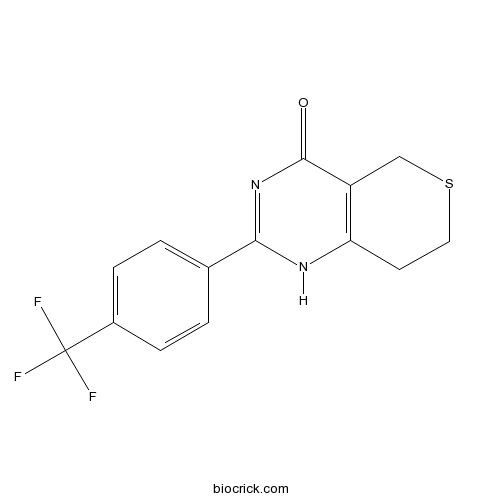
-
BCC2163
Scriptaid
Scriptaid is a potent histone deacetylase (HDAC) inhibitor, used in cancer research. Scriptaid is also a sensitizer to antivirals and has potential for epstein-barr virus (EBV)-associated lymphomas treatment.
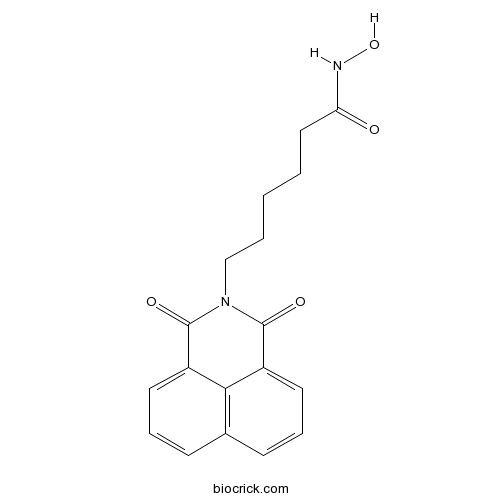
-
BCC4453
Adenine HCl
Adenine hydrochloride (6-Aminopurine hydrochloride) is a purine derivative with a variety of roles in biochemistry, including cellular respiration, in the form of both the energy-rich adenosine triphosphate (ATP) and the cofactors nicotinamide adenine dinucleotide (NAD) and flavin adenine dinucleotide (FAD), and protein synthesis, as a chemical component of DNA and RNA.
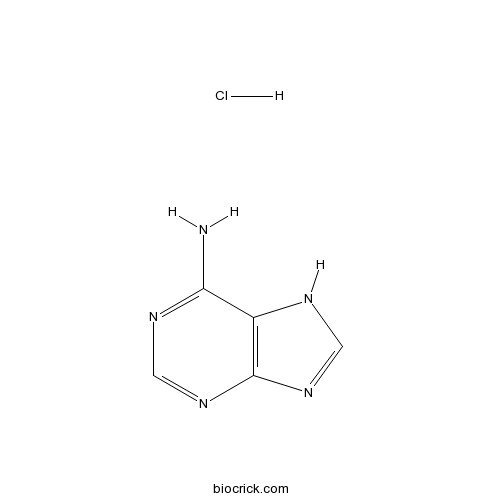
-
BCC4114
Altretamine hydrochloride
Altretamine hydrochloride is an alkylating antineoplastic agent.
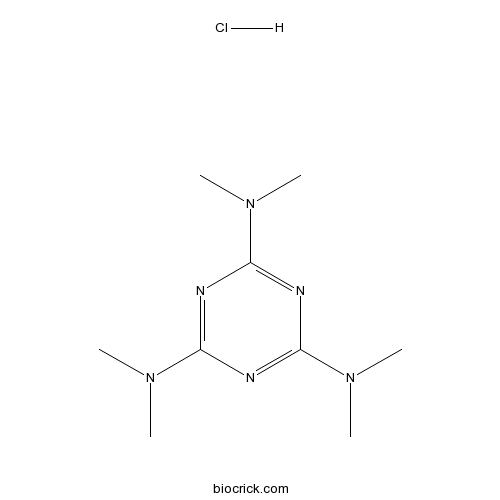
-
BCC3864
Teniposide
Teniposide is a podophyllotoxin derivative, acts as a topoisomerase II inhibitor, and used as a chemotherapeutic agent.
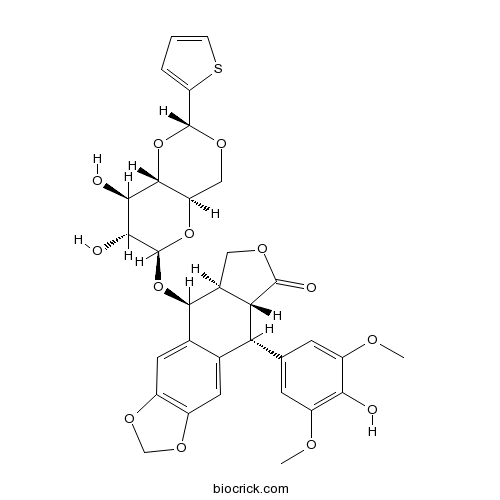
-
BCC5024
Zidovudine
Zidovudine is a nucleoside reverse transcriptase inhibitor (NRTI), widely used to treat HIV infection. Zidovudine increases CRISPR/Cas9-mediated editing frequency.
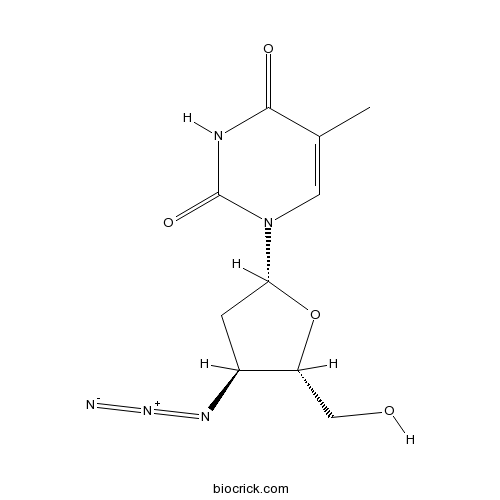
-
BCC1833
Palifosfamide
Palifosfamide is a novel DNA alkylator and the active metabolite of ifosfamide, with antitumor activity.
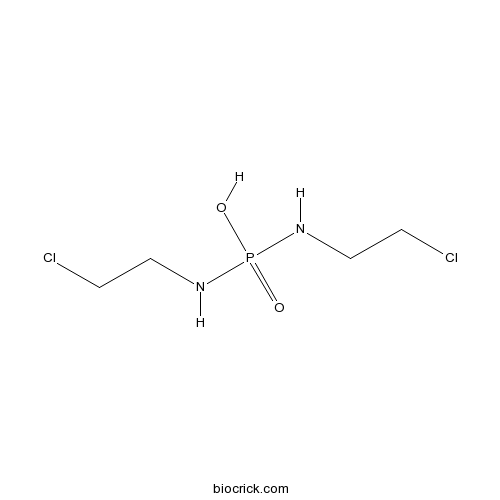
-
BCC4451
Adenine sulfate
Adenine hemisulfate (6-Aminopurine hemisulfate) is a purine derivative with a variety of roles in biochemistry, including cellular respiration, in the form of both the energy-rich adenosine triphosphate (ATP) and the cofactors nicotinamide adenine dinucleotide (NAD) and flavin adenine dinucleotide (FAD), and protein synthesis, as a chemical component of DNA and RNA.
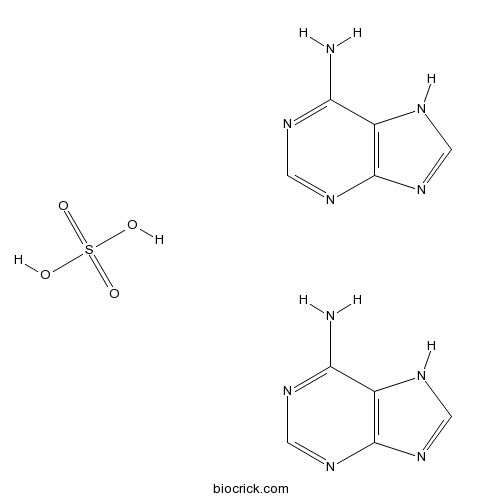
-
BCC1147
BIBR 1532
BIBR 1532 is a potent, selective and non-competitive telomerase inhibitor with IC50 of 100 nM in a cell-free assay.
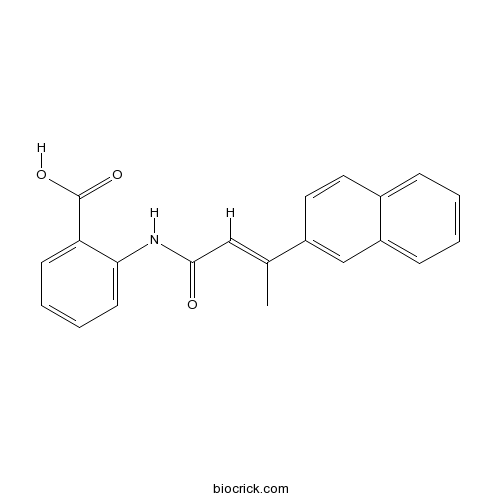
-
BCC2209
AG-14361
AG14361 is a potent PARP-1 inhibitor, with a Ki of < 5 nM, and in permeabilized SW620 and intact SW620 cells, the IC50s are 29 nM and 14 nM, respectively.
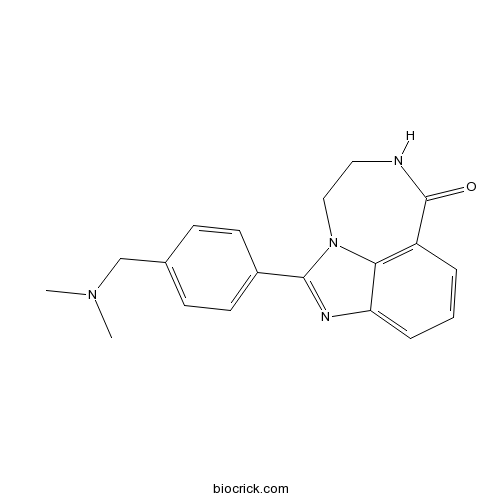
-
BCC3930
Viomycin
Antibiotic; inhibits bacterial DNA synthesis
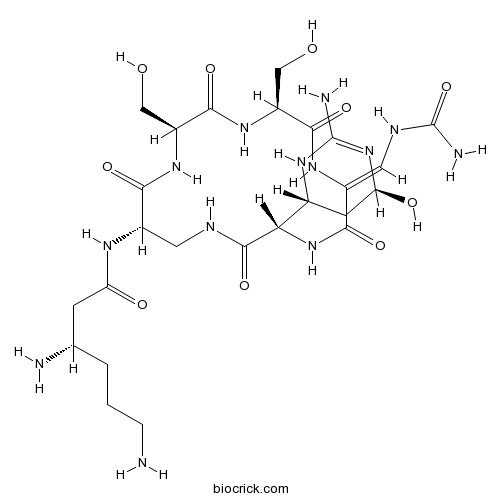
-
BCC1151
Etoposide
Etoposide (VP-16; VP-16-213) is an anti-cancer chemotherapy agent. Etoposide inhibits topoisomerase II, thus stopping DNA replication. Etoposide induces cell cycle arrest, apoptosis and autophagy.
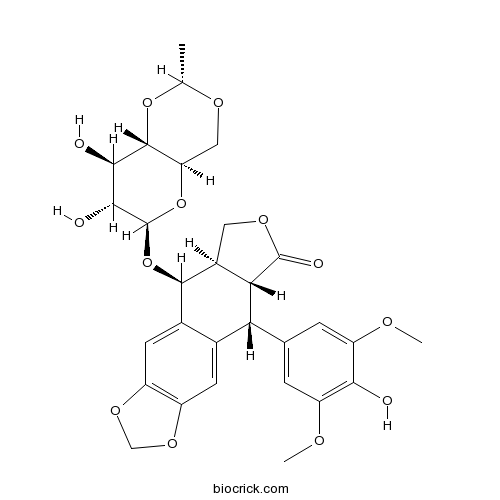
-
BCC7935
8-Chloroadenosine
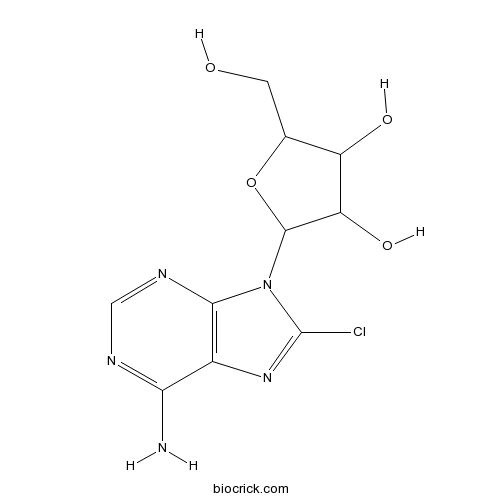
-
BCC5565
Blasticidin S HCl
Blasticidin S hydrochloride is a nucleoside antibiotic isolated from Streptomyces griseochromogenes. Blasticidin S is a potent inhibitor of protein synthesis in both prokaryotic and eukaryotic cells.
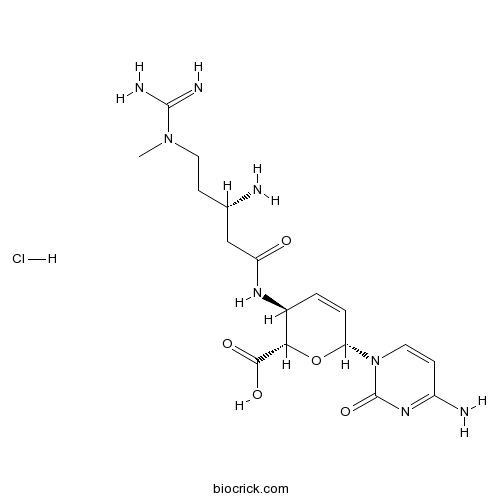
-
BCC2423
NSC 3852
Histone deacetylase inhibitor
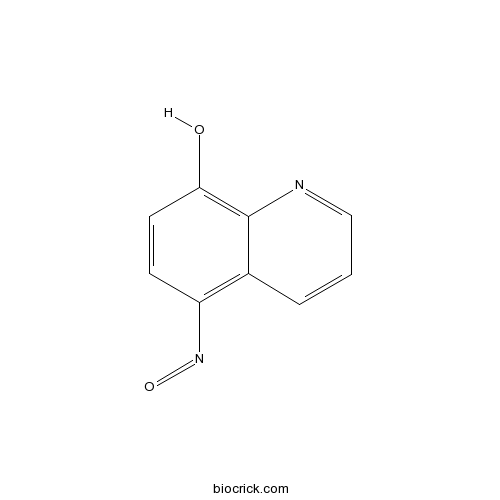
-
BCC4452
Procarbazine HCl
Procarbazine Hydrochloride is an alkylating agent, with anticancer activity.
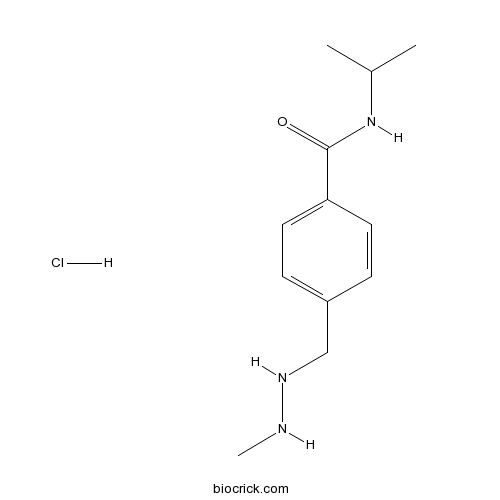
-
BCC7899
TMPyP4 tosylate
TMPyP4 tosylate (TMP 1363) is a quadruplex-specific ligand, which inhibits the interaction between G-quadruplexes and IGF-1. TMPyP4 tosylate (TMP 1363) is a telomerase inhibitor with antitumor effects in osteosarcoma cell lines.
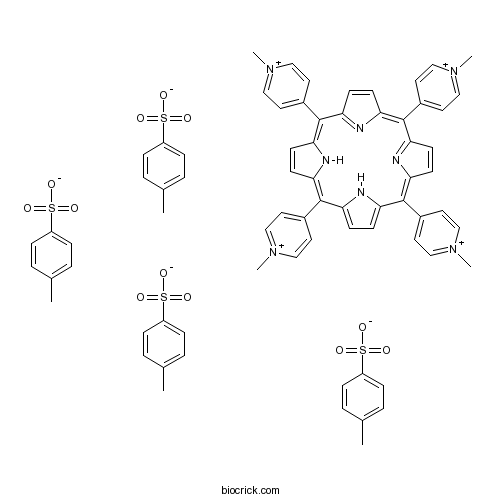
-
BCC1164
Ifosfamide
Ifosfamide is an alkylating chemotherapeutic agent with activity against a wide range of tumors.
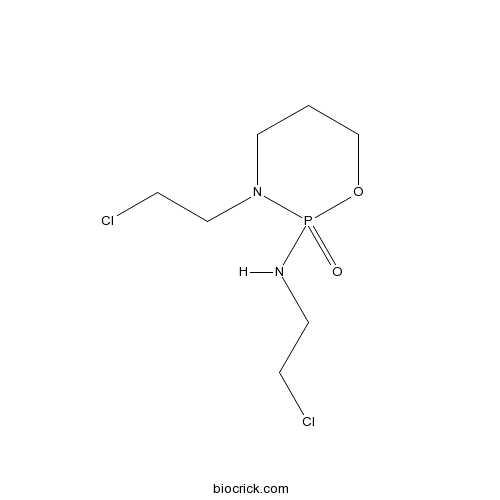
-
BCC2424
Pyroxamide
Pyroxamide is a potent inhibitor of histone deacetylase 1 (HDAC1) with an ID50 of 100 nM. Pyroxamide can induce apoptosis and cell cycle arrest in leukemia.
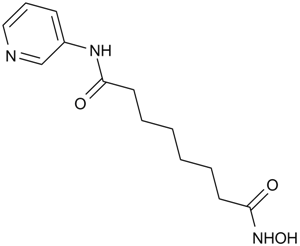
-
BCC2425
SBHA
Histone deacetylase inhibitor
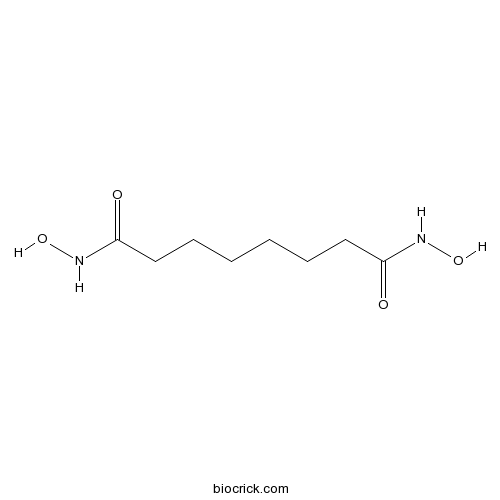
-
BCC4695
Penciclovir
Penciclovir is reported to be potent against HSV types 1 and 2 with IC50 of 0.04-1.8 μg/mL and 0.06-4.4 μg/mL, respectively.
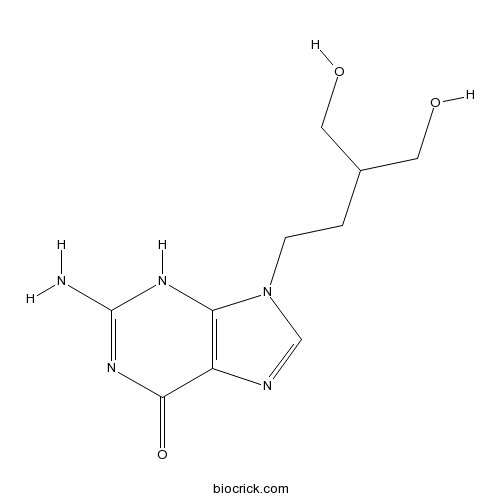
-
BCC3601
Panobinostat (LBH589)
Panobinostat (LBH589; NVP-LBH589) is a potent and orally active non-selective HDAC inhibitor, and has antineoplastic activities. Panobinostat induces HIV-1 virus production even at low concentration range 8-31 nM, stimulates HIV-1 expression in latently infected cells. Panobinostat induces cell apoptosis and autophagy. Panobinostat can be used for the study of refractory or relapsed multiple myeloma.
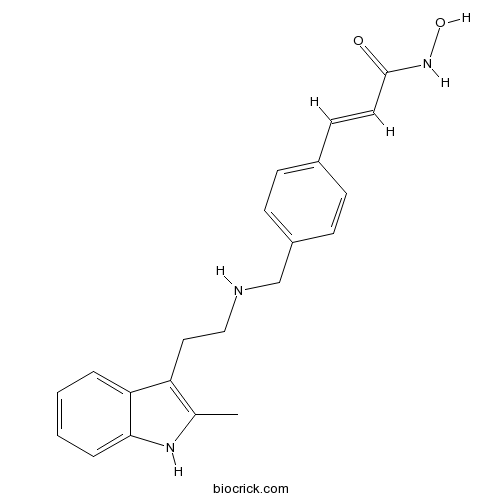
-
BCC2160
LAQ824 (NVP-LAQ824,Dacinostat)
Dacinostat is a potent HDAC inhibitor, with an IC50 of 32 nM; Dacinostat also inhibits HDAC1 with an IC50 of 9 nM, and used in cancer research.
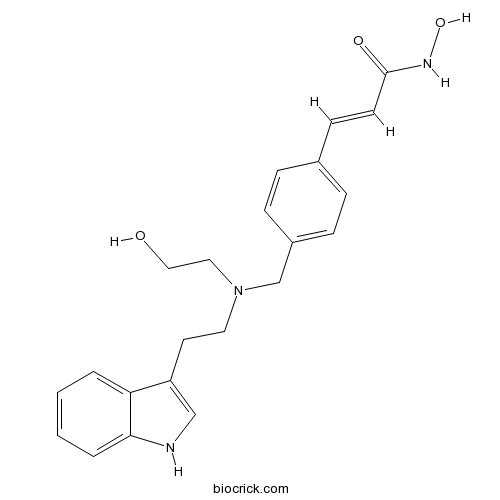
-
BCC2153
Belinostat (PXD101)
Belinostat (PXD101) is a novel HDAC inhibitor with IC50 of 27 nM in a cell-free assay, with activity demonstrated in cisplatin-resistant tumors.
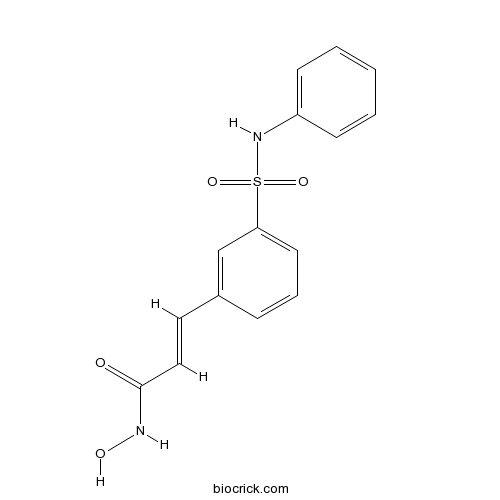
-
BCC1170
Carboplatin
Carboplatin (NSC 241240) is a DNA synthesis inhibitor which binds to DNA, inhibits replication and transcription and induces cell death. Carboplatin (NSC 241240) is a derivative of CDDP and a potent anti-cancer agent.
